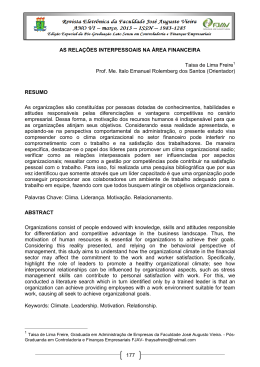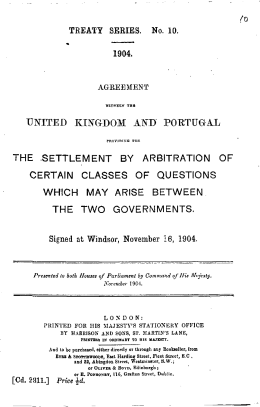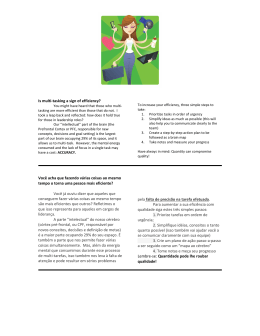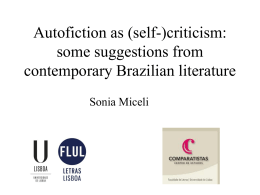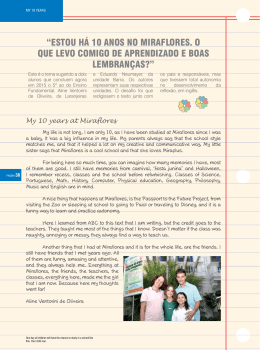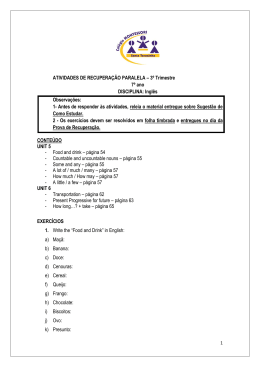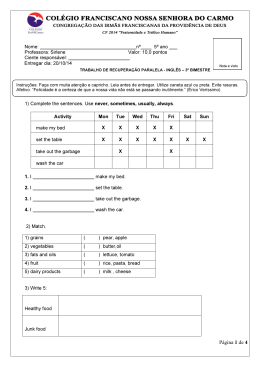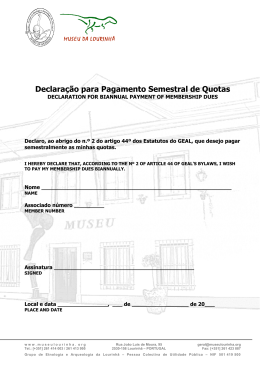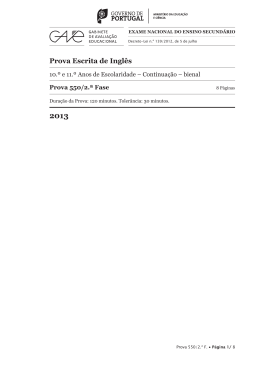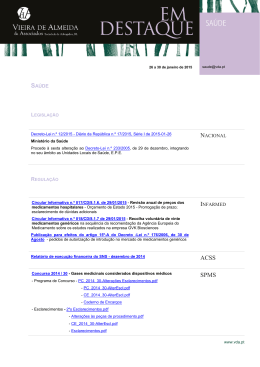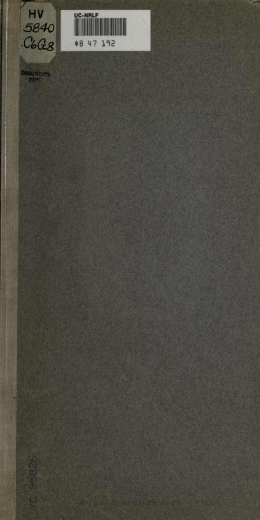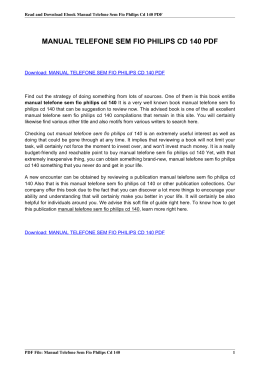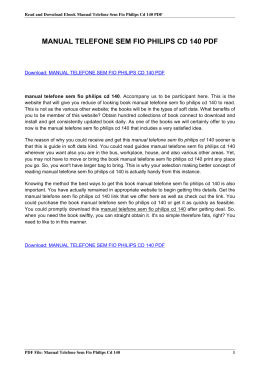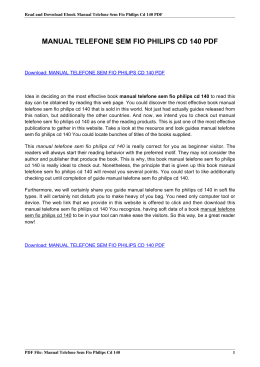LIBRARY – ARTICLE Nº 44 PHARMACEUTICAL PATENTS AND ACESS: A LITTLE TRANSPARENCY PLEASE Written by – Marcos Lobo de Freitas Levy It is absolutely amazing that many people who consider themselves as part of the cultured classes keep searching for a single and unique party, to which they can tag a GUILTY label, for the lack of drug access for a determined portion of the Brazilian population and to populations of other parts of the world. The most convenient solution is, obviously, to blame on pharmaceutical industry. Allegations, randomly repeated by those people, and echoed around the world, show the lack of transparency of these heralds of doom, about the real reasons for the threats made to pharmaceutical companies and for the proposition of numerous Bills of law that are presented precluding AIDS drugs (and other drugs) to be patentable. Why? Because in Brazil, for instance, they never informed to the public or to the media, for example, that the AIDS Program budget for 2004 (about R$ 540 millions) was almost 15% less than the budget for the program in 1999 (approximately R$ 620 millions) and that, as a result, this program's budget, which corresponded to 3.2% of the Ministry budget, in the year of 2005 accounted for just 1.8% of the same budget. Furthermore, it was never mentioned that this reduced budget was enough to treat, in 2004, twice the number of patients (155 thousand) treated in 1999 (76 thousand). More than that, in 2004, a representative from the Ministry of Health presented data in Brasília showing that the Este artigo refere-se às leis da data em que foi publicado e pode ser reproduzido, no todo ou em parte, desde que citados a fonte e o seu autor. Av. Brig. Faria Lima, 1656 · 5º andar · 01451-918 · São Paulo · SP · Brasil Telefone (55+11) 3038-0700 · Fax (55+11) 3038-0710 [email protected] · www.almlaw.com.br Página | 1 distribution of AIDS drug by the Brazilian government had made it possible for the government to save 1.2 billion dollars in hospital costs. Although those numbers are – or may be – (suddenly) changed without a clear reason, I have copies of documents downloaded from official websites and of presentations delivered by government members, who work for the AIDS program in Brazil, including one from March 2005, which present the numbers as mentioned above. The idea that an ever increasing number of patients could be treated each year while, at the same time, decreasing the amount budgeted for supplying that treatment indicates, to say the least, a lack of responsibility. It is absolutely clear that government (in this case the Ministry of Health) is responsible for budging its expenses and has consistently been doing that job badly. According to data published in the newspaper 'Folha de São Paulo', the government spent, in 2004, the amount of R$ 525 million in advertisement (to speak in its own favor) and will spend another R$ 620 million until the end of 2005. This is almost double the amount spent in the AIDS program in 2004. When we look at the numbers for 2009 and 2010 the above becomes even more clear as for treating an approximate number of 210.000 patients the budget for 2009 was of R$ 1.087.000,00 reais and the same numbers are being used by the government for the budget of 2010. The book "The Cost of Rights", by Stephen Holmes, Professor of Politics at Princeton University and Cass R. Sunstein, Professor of Law Philosophy at the University of Chicago, clearly explains that rights cost money and governments should be prepared to pay for the rights it grants. This does not seem to be the case in Brazil, where the Constitution is prodigal in distributing rights and quite modest in indicating which income sources will pay for sustaining these rights. Activists, with the real sense of responsibility inherent to them, should not accept that governmental expenses in advertisement in 2004 are nearly in the same amount spent for buying drugs against AIDS. Este artigo refere-se às leis da data em que foi publicado e pode ser reproduzido, no todo ou em parte, desde que citados a fonte e o seu autor. Av. Brig. Faria Lima, 1656 · 5º andar · 01451-918 · São Paulo · SP · Brasil Telefone (55+11) 3038-0700 · Fax (55+11) 3038-0710 [email protected] · www.almlaw.com.br Página | 2 Accordingly, it is necessary to definitely settle those doubts created as a result of information based in myths about patents, which compose a lot of the reasoning for the bad image thrown on the pharmaceutical industry, for the sake of transparency: 1- Patent laws are not a novelty. The oldest ones remit to the year of 1449 (process for coloring glass), in England and 1476 (process for blowing glass) in Venice. International laws, including the Paris Convention of 1883, do not impose any restraint to drugs patenting, provided the same pre-requirements for patenting any other product are met. 2- Industrial property laws do encourage new discoveries. To see that all we have to do is look at the number of new drugs for all kinds of diseases that have been discovered in the past years in countries such as Japan, Italy, Switzerland, and others that started to comply with industrial property rights in the last 35 to 40 years. Similarly, in Brazil, the enactment of the new Industrial Property Law (Law 9.279/960) has given the right incentive to enabled local laboratories, even those belonging to the government, to present an increasing number of drugs patent requests. 3- The exclusivity period of a pharmaceutical product in the market is, in average, 10 years, not 20, as emphasized by people who, in spite of knowing what the truth is, play games with words and numbers attempting to, and sometimes achieving, mislead the public. This happens because the term of 20 years for a patent (exclusivity period) according to the law, starts to be counted from the date the request is filed and, the time from the product creation process, to clinical researches and, finally, to approval by a regulatory agency (ANVISA, in the case of Brazil) takes approximately 10 years. Since no pharmaceutical product can be put in the market before it is approved by the competent Regulatory Agency, the average time left on a patent, after the drug is marketed is 10 years. 4- There is no monopoly in disease treatment. The object of a patent is the drug (the molecule) that will compete (as it indeed does) with other patented drugs and, most of the times also with generic drugs. How many patented and non-patented drugs are there in the market for the treatment of AIDS, arterial hypertension, hypercholesterolemia, or infections? Only for the treatment of arterial hypertension, there are dozens with no patent protection. Este artigo refere-se às leis da data em que foi publicado e pode ser reproduzido, no todo ou em parte, desde que citados a fonte e o seu autor. Av. Brig. Faria Lima, 1656 · 5º andar · 01451-918 · São Paulo · SP · Brasil Telefone (55+11) 3038-0700 · Fax (55+11) 3038-0710 [email protected] · www.almlaw.com.br Página | 3 5- The discovery of new drugs and the continuity of researches account for reductions on mortality and morbidity rates and on expenses with the treatment of patients with HIV/ AIDS. No one can deny this. Indeed, statistical data by the Ministry of Health allow us to easily come to this conclusion. If the situation is different in Africa and in some other places in the world, that's because there is no infrastructure allowing the drug to reach the places where it is needed and there aren't physicians and practices enough to follow patients up. Thus, it is not the lack of drugs, but the lack of infrastructure that precludes treatment. To corroborate this, the Civil Society Report on Intellectual Property, Innovation and Health of 2006 says that: “The true barriers to access lies in the lack of distribution conditions, adequate medical services, communication systems, education and in the inefficiency of a large number of public health systems in developing countries. Finally, Brazil did not recognize drug patents (product patents) during the period of 1945 to 1996 – fifty one years - and did not recognize patents for drugs manufacturing processes from 1969 to 1996 – twenty eight years. During all that time, neither the national industry, nor the government, took the opportunity that was being given to them, and dedicate themselves, as they should, to the creation of a national industry of research and development. Today, Brazil has a much smaller and less active basic industry in the pharmaceutical field than India and China, just to mention two examples of countries that currently comply with drugs patents. Now, with industrial property rights protection, perhaps there is enough incentive for Brazilian companies to enter in research and development of new drugs that will be necessary in the future for treating pathologies that still do not have a definitive therapy. Executive View, march 15th, 2010. Este artigo refere-se às leis da data em que foi publicado e pode ser reproduzido, no todo ou em parte, desde que citados a fonte e o seu autor. Av. Brig. Faria Lima, 1656 · 5º andar · 01451-918 · São Paulo · SP · Brasil Telefone (55+11) 3038-0700 · Fax (55+11) 3038-0710 [email protected] · www.almlaw.com.br Página | 4
Download

